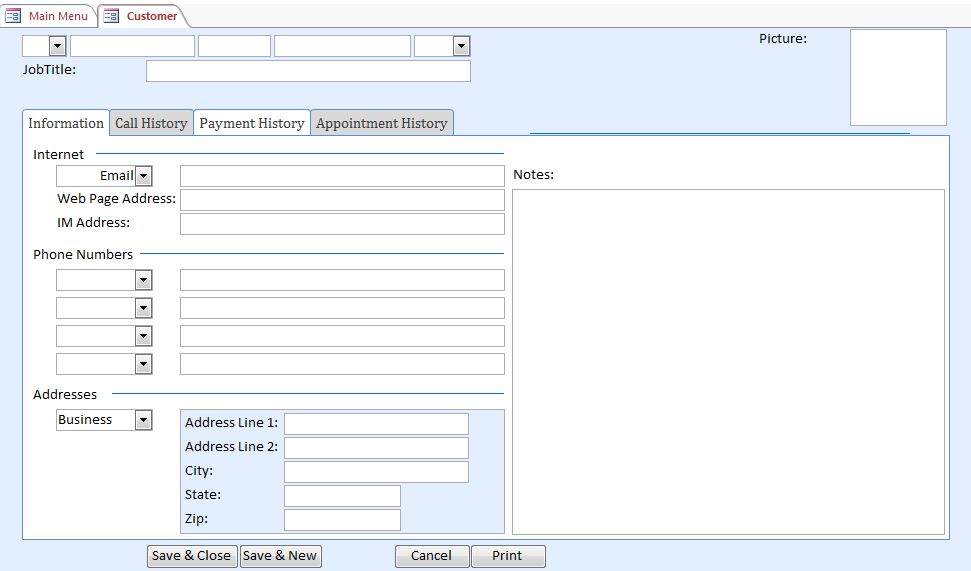Access Appointment Scheduler Template

Microsoft Access Scheduler Database Template - A Microsoft Access developer toolMicrosoft Access SchedulerYou have just found a powerful Microsoft Access Scheduler Template designed to save you time and help you learn!If you're like most Microsoft Access Developer, you KNOW the value of fast and effectivedevelopment.What if you could start a project with a well documented template that would make you save time and money, and help you learnMicrosoft Access programming techniques at the same time. Or you could just import the objects you need in your ownproject.You have to develop a Microsoft Access Database that runs resources ( therapists, doctors, hair stylists, dentists, beautysalons, lawyers, meeting rooms.) and manage a schedule for it with task to do?Here’s the tool for you!
Microsoft Access is the most widely used database system in the world. More then 40 million companies use it. When correctly used, Access offers an excellent alternative for the bigger database systems like Oracle, DB2 or SQL Server. When you have a lot of users connected at the same time to a database (50 and more.), Access is not a logical choice but for up to 20 users it's the most economical solution because of the rapid development environment.The use of Microsoft Access helps reduce development costs and time and you don't need a big technician team to take care of the database. Just make periodic backups like for any other database system.For some persuasive arguments on why Access is 'right sized' for a lot of jobs, read the white paper ' by Luke Chung, president of FMS, Inc.
The Agency for Healthcare Research and Quality outlined implementation steps for Open Access Scheduling in their “CAHPS Ambulatory Care Improvement Guide” (July 2015). These steps include:. Measure supply and demand as precisely as possible. Establish a test team of providers who are willing to try the system out. Reduce the backlog of appointments.
Microsoft Appointment Scheduler Template
This may take 6 to 8 weeks of extra work. To facilitate this difficult task, practices may want to set a target date and agree that visits will not be pre-scheduled beyond that date. Purchase order example. Another useful recommendation is to apply the concept of “max packing.” The idea is to reduce the demand for future visits by taking care of any upcoming preventive or screening needs whenever the patient comes in for a necessary visit regardless of the reason for that visit. Simplify the appointment types and make them all roughly the same length. One recommended tactic is to minimize complexity by limiting the practice to three appointment types: (1) personal, where the patient is seeing his or her physician; (2) Team, where the patient is seeing someone else on the clinical team; and (3) unestablished, where the patient does not yet have a specific physician.
Appointment times can also be specified as either short or long, where the long appointment is roughly equivalent to two short ones. Develop a contingency plan for days (or parts of the day) when demand far outstrips the availability of physicians. This plan should identify who can supplement or substitute for each physician, if and when needed. Also, the group should be proactive about planning for those times when they can predict increases in demand, such as visits for school physicals or flu shots. Reduce demand for one-on-one visits with patients.
Calendar Scheduling Access Template
One helpful tactic is to identify and address sources of unnecessary visits based on outdated clinical protocols, such as routine follow-up for urinary tract infections. Another approach is to implement group visits to better manage care for patients with the same chronic condition. Finally, clinicians can use the phone and email effectively to address concerns that do not require a visit. Once the practice is able to offer same-day appointments, it should assess its effectiveness by measuring appointment availability on a daily basis (e.g., third next available appointment).